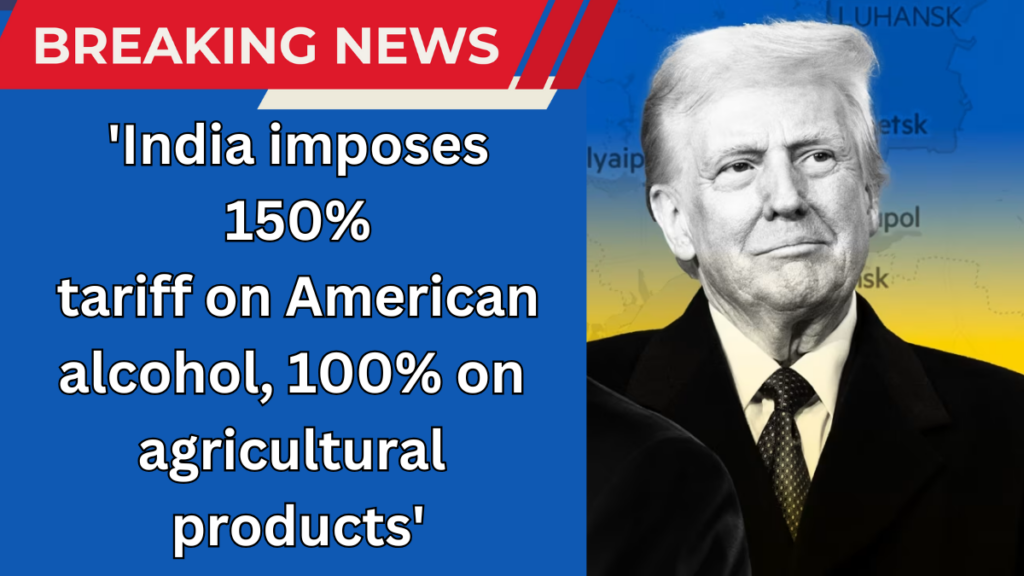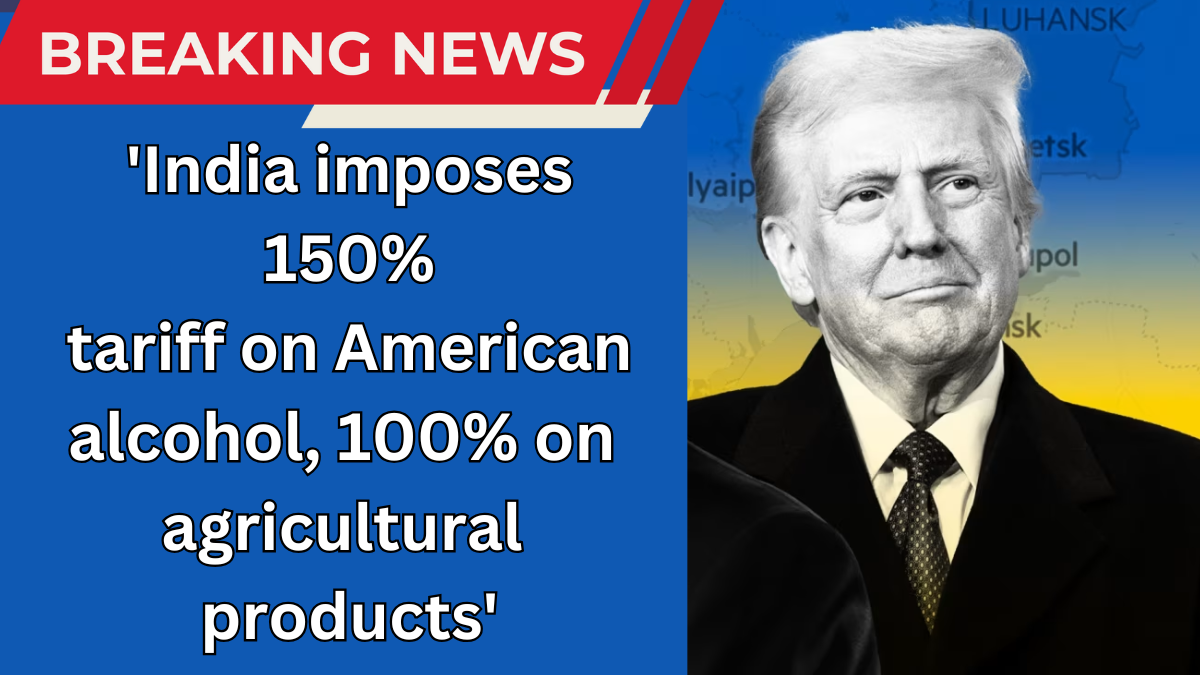The White House recently addressed concerns regarding tariffs imposed on the United States by various countries, particularly India and Canada. The discussion underscored the US administration’s stance on fair trade practices and highlighted President Donald Trump’s commitment to ensuring balanced trade relations.

US President Advocates for Reciprocal Trade Practices
During a press briefing, White House press secretary Karoline Leavitt emphasized that President Trump is dedicated to promoting fair trade policies. She accused Canada of exploiting the United States for decades and stated that Trump aims to rectify these trade imbalances.
Leavitt highlighted how these imbalances have negatively impacted American businesses, particularly in key industries such as agriculture, dairy, and alcohol exports. According to Leavitt, President Trump believes the US has been overly lenient in past trade negotiations, which has resulted in American industries suffering from unfair competition.
“The president is again responding to the fact that Canada has been ripping off the United States of America and hardworking Americans for decades,” Leavitt said.
She further pointed out that Canadian tariff rates on American goods have been notably high, making it increasingly difficult for US producers to compete in Canadian markets. Such trade barriers, she explained, have reduced opportunities for American exporters, especially smaller businesses struggling to expand their presence internationally.
Highlighting India’s and Japan’s Tariff Policies
In her remarks, Leavitt also shed light on the tariffs imposed by India and Japan on American products. She stressed that the current administration is prioritizing American interests in international trade.
President Trump has expressed frustration over India’s stringent tariff policies, specifically noting that the 150% tariff on American alcohol and the 100% tariff on agricultural products severely hinder US trade efforts. Trump’s focus on these tariffs stems from his belief that American farmers, brewers, and other producers are losing valuable market opportunities due to such restrictive trade barriers.
Key Tariff Rates on US Products
The White House shared a detailed comparison of tariff rates applied by various nations:
| Country | Product | Tariff Rate |
|---|---|---|
| Canada | American Cheese & Butter | 300% |
| India | American Alcohol | 150% |
| India | Agricultural Products | 100% |
| Japan | Select US Goods | High Tariff Rates |
Leavitt questioned whether such high tariffs, particularly on Kentucky bourbon, were fair trade practices. She argued that these barriers hinder American exports and prevent US products from gaining fair access to foreign markets.
Trump’s Response to Tariff Concerns
On Sunday, President Trump indicated the possibility of raising tariffs on Mexico and Canada in response to longstanding trade imbalances. He claimed that several countries have historically exploited the United States through unfair tariff practices.
Trump explained that excessive foreign tariffs have significantly hurt American manufacturers and suppliers, leading to job losses and stifled economic growth. He stressed that imposing stricter tariffs on these nations would serve as a necessary measure to protect domestic industries.
During his remarks, Trump also addressed the issue of fentanyl trafficking into the United States, suggesting that stricter trade measures would discourage illicit trade activities along the US-Mexico border. Trump tied these concerns to his broader strategy of ensuring national security while promoting economic stability.
Temporary Tariff Delays
In a recent move, Trump postponed certain tariffs on Mexican and Canadian products that were initially set for implementation on April 2. This decision followed discussions with Mexico’s President Claudia Sheinbaum. Despite these delays, Trump criticized Canada’s tariff policies, labeling them excessive.
“We’re giving Mexico and Canada a chance to come to the table,” Trump said. “But if they refuse to negotiate, we won’t hesitate to increase tariffs to ensure American interests are protected.”
While Trump’s delay provided temporary relief for affected businesses, economists warned that escalating trade tensions could still result in economic uncertainty for industries relying on international trade partnerships.
India’s Trade Relationship with the US
President Trump also voiced concerns about India’s challenging trade environment. He criticized India’s high tariff rates and claimed that trading with the country remains difficult. However, Trump acknowledged that India had recently agreed to reduce some of its tariffs following increased pressure from the US administration.
India’s decision to ease trade restrictions is seen as a significant step towards improving bilateral trade relations. Trump praised this progress but maintained that further negotiations were essential to achieve comprehensive trade balance.
Broader Impact on Global Trade
Economists and trade analysts have expressed mixed opinions regarding Trump’s aggressive trade stance. While some believe imposing stricter tariffs may protect American jobs and industries in the short term, others warn that prolonged trade tensions could increase costs for US consumers and businesses.
Many industry experts suggest that Trump’s tariff strategy is designed to create leverage for future trade negotiations. By applying pressure on foreign nations with restrictive trade practices, Trump aims to establish fairer agreements that encourage free-market competition and promote American exports.
Business Leaders’ Concerns
In response to Trump’s aggressive trade policies, several US business leaders have voiced concerns about the unpredictability of tariff adjustments. Industries such as automotive, agriculture, and technology have expressed fears that sudden tariff hikes could disrupt supply chains and create financial instability.
Despite these concerns, Trump remains firm on his belief that bold action is necessary to counteract what he describes as “years of unfair international trade practices.”
Future Trade Negotiations
Moving forward, trade experts anticipate heightened diplomatic talks between the US and key trade partners such as Canada, Mexico, India, and Japan. The US administration aims to resolve outstanding disputes and establish trade deals that prioritize American economic interests.
Trump’s administration continues to highlight the importance of fair trade and seeks to eliminate trade practices that place US businesses at a disadvantage. The White House maintains that stricter tariffs are a vital tool in achieving these objectives.
FAQs
1. What are the main tariff concerns the US has with India?
The US has raised concerns about India’s 150% tariff on American alcohol and 100% tariff on agricultural products, arguing that these rates limit US exports. President Trump believes these tariffs restrict American businesses from competing fairly in Indian markets.
2. Why is President Trump focusing on tariffs with Canada?
Trump believes Canada has imposed excessive tariffs, such as a 300% tariff on American cheese and butter, which he argues harms US businesses. He claims that these policies have disproportionately affected American dairy farmers and cheese producers.
3. Did India agree to reduce its tariffs?
Yes, following diplomatic pressure from the US, India agreed to lower some of its previously high tariffs. However, trade experts suggest that further discussions are necessary to address all outstanding trade issues between the two countries.
4. What prompted Trump’s decision to delay tariffs on Mexico and Canada?
Trump postponed certain tariffs on Mexican and Canadian products after discussions with Mexico’s President Claudia Sheinbaum. The delay aimed to provide both nations with an opportunity to negotiate improved trade terms and address US concerns about cross-border trade practices.
Click here to learn more
